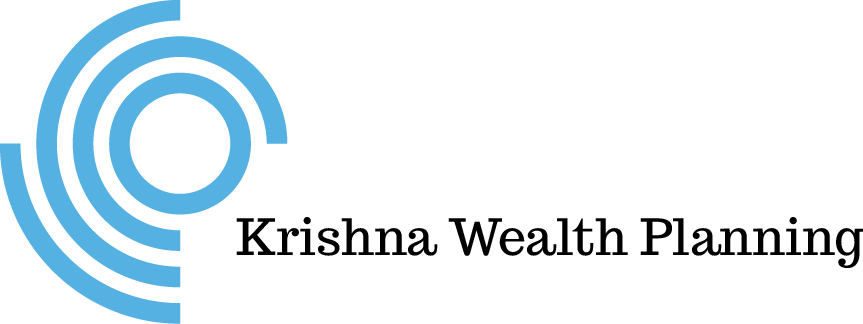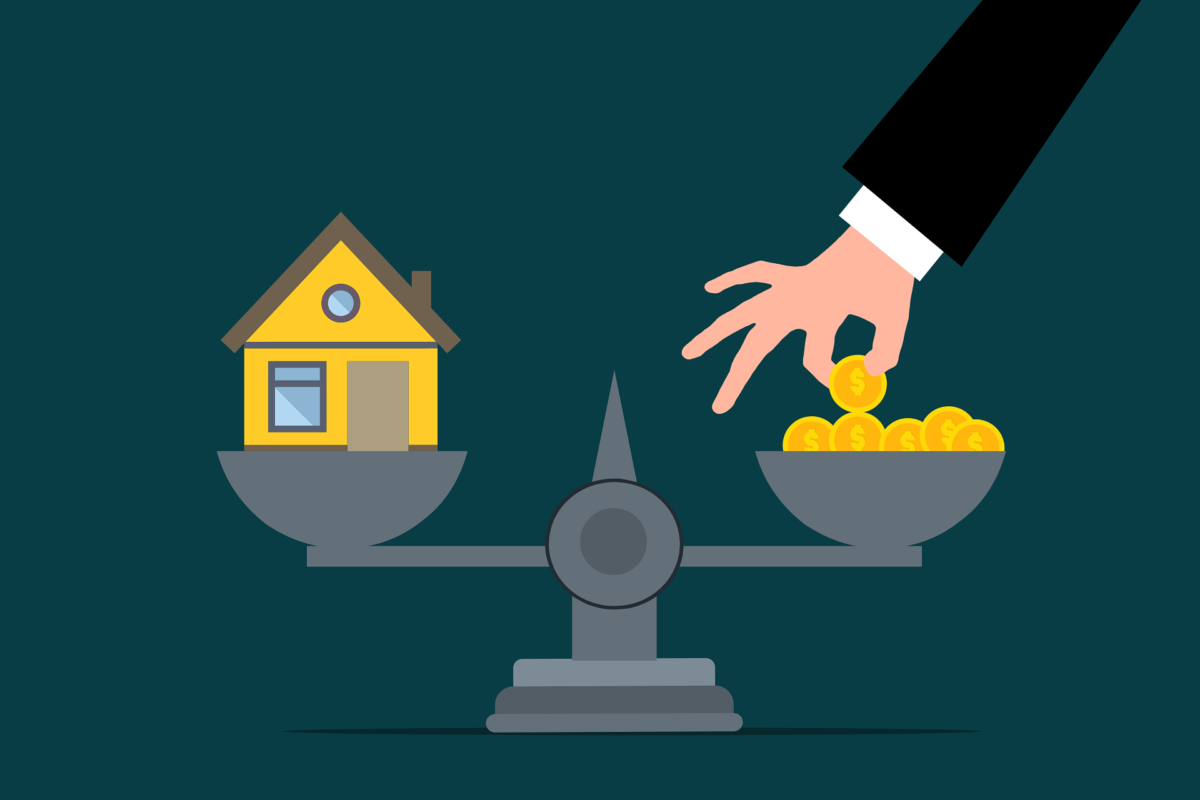9-Minute Read
Let us start with a warning. The ideas in this piece are NOT for everybody. The strategies to follow may be helpful if you don’t have a strong need to borrow money but are open to ways of strategically utilizing debt in your financial plan. We’ll explore the concept of debt capacity and look at two specific solutions that might change the way you think about your own household’s balance sheet.
Debt Freedom versus Debt Capacity
If you are debt free or strive to be, then that is wonderful. Most people I speak with have a goal of eventually being debt free. No debt means one less risk point and can be a decent way of measuring your financial strength.
Debt can be an emotional subject too. There are endless stories of those who took on too much debt, became over leveraged and faced crushing consequences. The extreme cases don’t necessarily tell the complete story though. If you can be responsible with your spending and debt management, you may have opportunities to strengthen your financial plan with debt. How?
The term I like to use is called debt capacity. While this has a different definition in the business and accounting worlds, I think of debt capacity for families as the option (not the obligation) to borrow money on your own terms with flexible payback. As we’ll see, this is more than simply having a good credit score.
Debt capacity in this sense is about building both strength and flexibility in your financial plan. It’s about looking at both sides of your balance sheet holistically (assets and liabilities). If this concept is still counterintuitive to you, don’t worry. Just read on with an open mind. It may help to first explain what flexible debt is.
The Requirements of Flexible Debt
- Low Interest Rate – What constitutes a low rate will be dependent on the current economic environment. Perhaps 5 percent or lower is a good target today. But keep in mind that a flexible debt doesn’t need to have the lowest possible interest rate around to still be valuable.
- Flexible Payback – Payback of loan principal is optional under most circumstances. Yes, you read that correctly.
- Productive Payback – Whatever loan principal you do pay back immediately restores or increases your future borrowing power.
Many types of debt, assuming you have a reasonably good credit score, will pass the first requirement of having a low interest rate. Average 30-year fixed mortgage rates today are around 3 percent. Even credit cards, notorious for having high annual APRs, often have introductory periods with low or no interest. But most types of personal debt don’t pass the next two criteria. This includes most (but not all) mortgages and 401k loans, car loans and student loans.
This is not to say that most types of debt available to the consumer public are bad. They can often be practical and solve specific problems. Their downside is a lack of flexibility. It just becomes harder to be strategic with most types of debt. All that said, let’s turn our attention to two debt solutions that meet all three criteria.
Debt Capacity Strategy # 1 – Securities Based Lending Facilities
To help explain this first strategy, imagine if you were living the following scenario.
You and your spouse are in your early 50s and have done a nice job accumulating wealth during your careers. You’ve met all the college obligations for your two children. You have minimal debt aside from 5 years left of payments on your primary residence mortgage. You have healthy 401k plan balances and a brokerage account worth around $800,000 (cost basis $500,000). You are considering the purchase of a second home which you may or may not ultimately use to generate rental income. This home will cost $400,000 and you’re uneasy about obtaining another long-term mortgage at this stage of your life.
You could first simply consider selling assets in your brokerage account. But then you realize you’ll need to realize $150,000 in capital gains to access the $400,000 you need. Your tax advisor estimates this will increase your federal tax bill by nearly $30,000 based on where your projected household income level. That’s a possibility, but is there another path?
Notably there are banks that offer securities-based lending facilities (SBLF). They also go by the name collateral lending. If you had such a facility on your brokerage account, you could immediately borrow the full $400,000 using your own investments as collateral. You turn around and pay for the second home in cash. You avoid the hefty tax bill (at least for now). You still have some work to do to pay down this new loan balance. But you’re comfortable because you can do it over the next few years mostly on your own terms.
SBLFs are sort of a way for you to become your own banker. Without getting into all the rules, here are a few pros and cons to consider:
Pros of Securities Based Lending
- Low Borrowing Rates – In most cases SBLFs have a variable interest rate, but fixed rates can also be available. Rates today for institutional (non-retail) accounts are typically around 2.5 to 3.5 percent but also vary based on the size of the line of credit you have in place.
- Favorable Borrowing Capacity – How much you’re eligible to borrow depends on the underlying investments held in your account. Typically, a diversified equity investment portfolio using ETFs and mutual funds could be eligible for a line of credit of around 60 to 70 percent of account’s value.
- Flexible and Productive Payback – When you borrow from an SBLF, you have the flexibility on when you pay back principal. Regular interest payments, however, must be paid and are typically done on an automatic monthly basis. When you pay back principal, you typically restore your future borrowing power dollar for dollar.
- Potential Tax Savings – As the earlier example showed, if you utilize taxable investment accounts long enough, you tend to build up an embedded capital gain on your assets. If such assets are sold, you must take the tax hit. However, borrowing against the asset instead gives you the flexibility to postpone or possibly avoid the tax event.
Cons of Securities Based Lending
- Risk of Collateral Call – This type of lending facility does need to be monitored carefully. Certain loan to value ratios needs to be maintained. If the underlying collateral is invested in volatile assets, it’s possible for a market downturn to trigger a requirement for you to add cash to your account or sell assets to restore the proper ratios. Generally, if you only borrow up to 50 percent of the available line of credit available, you can maintain a sufficient safety margin.
- Minimum Account Size Needed – This will vary based on the bank you’re working with and the type of assets in your brokerage account. Most banks will have some minimum line of credit requirement. For example, if they require a $100,000 line of credit and are willing to extend borrowing power based on 65 percent of the value of your account, you will need an account size of around $154,000. A $500,000 line of credit would require an account size of $769,000…and so on.
- Not Available on Retirement Accounts – You might have always taken a tax centric approach for retirement savings. This could be getting as much tax break now by putting money in accounts such as 401ks, SEP IRAs, traditional IRAs, etc. Alternatively, you might choose to maximize tax-free assets such as Roth IRAs. A flexible borrowing mechanism like an SBLF is simply not available on these types of accounts. Depending on how much you value this flexibility, it could challenge the way you think about where you save money for future goals.
The Next Best Thing? Margin
A few words about margin. Most brokerage accounts can be established with margin capability. There are similarities to the securities-based lending. They’re a close cousin. However, margin borrowing capability tends to be lower and interest rates are typically much higher than SBLFs.
However, margin capability is easy to setup. You can also use margin to purchase new investments in your brokerage account. I wouldn’t recommend that as a general practice. But that is one feature you cannot do with a SBLF where loan proceeds must be used for any other purpose than securities investing.
Debt Capacity Strategy #2 – The HECM Line of Credit
To help explain this second strategy, imagine if you were living this next scenario.
You and your spouse, both age 64, just retired. You are debt free and have a home worth $500,000. You are in good health and intend to live in the same home for at least the next ten years. You also have a $1.6 Million investment portfolio after recently drawing $80,000 to supplement Social Security and meet your spending goals for the upcoming year.
As it stands now, you have an initial 4.8% annual portfolio withdrawal rate which we have determined to be reasonable based on other assumptions in your plan. Now imagine one year has passed. Due to a severe recession, your portfolio has declined in value by 25 percent and now worth $1.2 Million. Scary thought for the first year of your retirement, right? But you still have a decision to make. Do you take the same $80,000 distribution (with some inflation adjustment) in retirement year number two? Perhaps so, but your projected withdrawal rate will jump from 4.8% to 6.8%. Your plan is still strong enough to absorb this withdrawal, but is there another path?
Based on a few reasonable interest rate and cost assumptions, this calculator from retirement researcher Wade Pfau shows that you may be eligible for a HECM line of credit of nearly $200,000. HECM stands for home equity conversion mortgage. You might also know this as a “reverse” mortgage. To continue the scenario, $200,000 equates to almost 2 and half years of hypothetical spending needs from your portfolio.
While there is no guarantee the investment markets will recover fully in those 2.5 years, you may have tilted the odds in your favor by not selling assets at a low point. This is just one strategic way of using a HECM line of credit. I covered several other strategies in a piece a few years ago: 5 Ways a Reverse Mortgage Can Help Your Retirement.
Without getting into all the rules for this type of mortgage, here are a few pros and cons to consider:
Pros of the HECM Line of Credit
- Tax Efficiency – Mortgage proceeds received (drawn from the line of credit) are tax-free the similar to the way most loan proceeds are. Conversely, distributions from most retirement accounts typically create taxable income.
- Flexibility – You can pay back the mortgage balance any time or choose not to make any payments at all. This is unlike most traditional “forward” mortgages where you are you required to make a monthly payment every month, rain or shine.
- Increasing Protection Over Time – Any unused portion of your line of credit (along with principal you pay back) will grow each year, regardless of the direction the value of your home goes. Your home value only comes into play at the time you originate the loan and determine your starting line of credit. This feature can often be under appreciated. There can be immense benefits to having a growing line of credit that is independent of what direction the stock market AND your local real estate market are heading.
- Contractually Guaranteed – Unlike a home equity line of credit (HELOC – see below), a reverse mortgage cannot be revoked during times of economic stress. Further, you can never owe more on the mortgage than the value of your home.
Cons of the HECM Line of Credit
- Age Restricted – You (and often your borrowing spouse) must be at least age 62. If you haven’t reached this age, no action can be taken other than building the strategy into your financial plan. You could, however, introduce the idea to older family members that may benefit.
- Upfront Costs are High – In the example used above, there is an estimated total upfront cost of $18,000. This is comprised of loan origination fees, initial mortgage insurance and other closing costs. These costs can either be paid upfront or more typically rolled into the starting loan balance. One of the reasons the starting costs are so high is to provide the contractual protections noted earlier.
- Requires Intention to Live in the Same Home – While your life circumstances and health can always create a need to change, you should have the intention of living in the same home as your primary residence for as long as possible. There is no specific rule of thumb, but if you intend to move within five years, you might seek a different strategy.
The Next Best Thing? HELOCs
A few words on the HELOC (home equity line of credit). If you’re not eligible for a HECM line of credit (typically due to age), a HELOC can be a good alternative.
HELOCs typically have low cost to establish and give you flexible payoff during your draw period (e.g., 10 years). It has similar flexibility benefits as a HECM, but your line of credit will not grow over time. Still HELOCs can potentially help you reduce the need to keep a large cash reserve in the case of an emergency.
On the other hand, HELOCs can be revoked by the issuing banks in severe economic times. Notably some large banks have frozen the issuance of new HELOCs in our current environment. Time will tell when some of these restrictions will be eased.
Tip: If you’re eligible for a HELOC, consider getting one in place before leaving employment or exiting a business. They can provide nice flexibility during a transitionary period. But they can be harder to obtain if you cannot prove you have a current stream of earned income.
Ok, well that’s probably enough debt talk for now. I hope this may have opened your eyes to some new possibilities. If you have comments or questions on this piece, please drop me a line at: [email protected]
References
- https://krishnawealth.com/seven-ways-to-maximize-your-tax-free-assets/
- https://krishnawealth.com/two-ways-of-quantifying-your-retirement-readiness/
- https://retirementresearcher.com/reverse-mortgage-calculator/
- https://www.nextavenue.org/5-ways-a-reverse-mortgage-can-help-your-retirement/
- https://www.wsj.com/articles/why-home-equity-loans-are-still-so-hard-to-come-by-11619699464
The information on this site is provided “AS IS” and without warranties of any kind either express or implied. To the fullest extent permissible pursuant to applicable laws, Krishna Wealth Planning LLC (referred to as “KWP”) disclaims all warranties, express or implied, including, but not limited to, implied warranties of merchantability, non-infringement, and suitability for a particular purpose.
KWP does not warrant that the information will be free from error. None of the information provided on this website is intended as investment, tax, accounting or legal advice, as an offer or solicitation of an offer to buy or sell, or as an endorsement of any company, security, fund, or other securities or non-securities offering. The information should not be relied upon for purposes of transacting securities or other investments. Your use of the information is at your sole risk. Under no circumstances shall KWP be liable for any direct, indirect, special or consequential damages that result from the use of, or the inability to use, the materials in this site, even if KWP or a KWP authorized representative has been advised of the possibility of such damages.
In no event shall KWP have any liability to you for damages, losses, and causes of action for accessing this site. Information on this website should not be considered a solicitation to buy, an offer to sell, or a recommendation of any security in any jurisdiction where such offer, solicitation, or recommendation would be unlawful or unauthorized.




